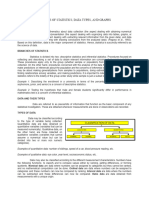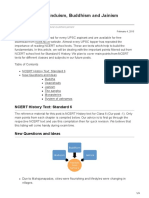0% found this document useful (0 votes)
18 views39 pagesLecture Note FDS Unit II
The document consists of lecture notes on the Fundamentals of Data Science, covering key statistical concepts such as statistics, descriptive and inferential statistics, types of data, variables, and frequency distributions. It explains the differences between population and sample, various data types, and methods for handling outliers. Additionally, it discusses graphical representations of data, including histograms and frequency polygons, as well as measures of central tendency like mean, median, and mode.
Uploaded by
AHILA R CSE DEPTCopyright
© © All Rights Reserved
We take content rights seriously. If you suspect this is your content, claim it here.
Available Formats
Download as PDF, TXT or read online on Scribd
0% found this document useful (0 votes)
18 views39 pagesLecture Note FDS Unit II
The document consists of lecture notes on the Fundamentals of Data Science, covering key statistical concepts such as statistics, descriptive and inferential statistics, types of data, variables, and frequency distributions. It explains the differences between population and sample, various data types, and methods for handling outliers. Additionally, it discusses graphical representations of data, including histograms and frequency polygons, as well as measures of central tendency like mean, median, and mode.
Uploaded by
AHILA R CSE DEPTCopyright
© © All Rights Reserved
We take content rights seriously. If you suspect this is your content, claim it here.
Available Formats
Download as PDF, TXT or read online on Scribd
/ 39



































































































